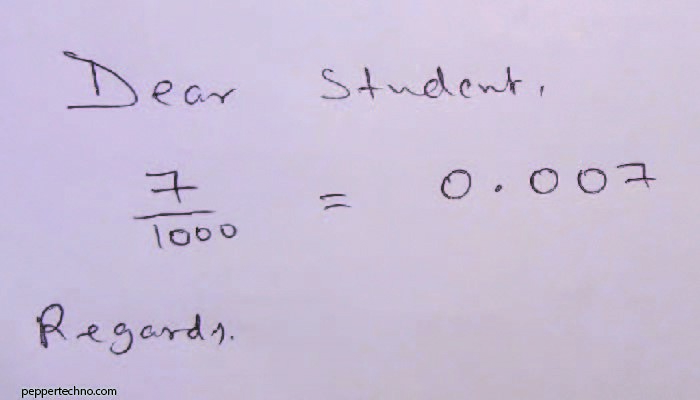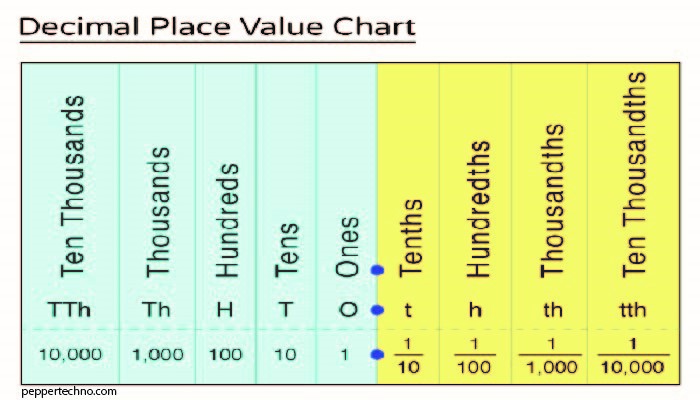What is the Decimal for 7?
Here we are discussing about what is Decimal for 7. In the realm of mathematics, numbers take on various forms and representations, each serving a unique purpose in different contexts. One such representation is the decimal system, a base-10 numerical system widely used in everyday life. This article delves into the decimal representation of the number 7, exploring its significance, properties, and applications.

The Basics of the Decimal System
To comprehend the decimal representation of 7, it’s essential to grasp the fundamentals of the decimal system. Unlike the binary system, which operates on a base-2 scale, or the hexadecimal system, which uses a base-16 scale, the decimal system relies on the base-10 scale. This means that each digit in a decimal number can take one of ten values, ranging from 0 to 9.
Decimal Representation of the Number 7
The decimal representation of the number 7 is, quite simply, 7. In the decimal system, each place value to the left of the decimal point represents a power of 10, while each place value to the right represents a negative power of 10. For the number 7, there is an implicit decimal point at the end, signifying that it is a whole number.
Equivalent Decimal Forms
It’s interesting to note that the number 7 can take on equivalent forms in the decimal system. For instance, the whole number 7 can be expressed as 7.0, emphasizing its place in the decimal system. This form is particularly useful when dealing with mathematical operations that involve both whole numbers and decimals.
Decimal Expansion of Fractions Involving 7
Fractional representations involving the number 7 also have decimal counterparts. Consider the fraction 7/2. When this fraction is converted to a decimal, the result is 3.5. This reveals that 7/2 is equivalent to 3.5 in decimal form. Similarly, fractions like 14/2 and 21/3 have decimal representations of 7.0 and 2.333…, respectively.
Recurring Decimals and the Number 7
Some fractions result in recurring decimals when expressed in the decimal system. One such example is 7/6, which equals 1.1666…, with the digit 6 repeating infinitely. The recurring decimal notation is often denoted by placing a bar over the repeating digit, in this case, 1.16¯.
The Role of 7 in Decimal Place Value
Understanding the place value of 7 in decimals is crucial for more complex mathematical operations. In the decimal number 7.89, 7 occupies the tens place. This means that it contributes a value of 7 multiplied by 10, or 70, to the overall number. The significance of 7 in the decimal system becomes more apparent as it moves to different place values.
Decimal Notation in Real-world Applications
The decimal system is the foundation for numerical representations in various real-world applications. Financial transactions, scientific measurements, and everyday calculations all rely on the decimal system. Understanding the decimal representation of 7 is essential for interpreting numerical data in these contexts.
The Connection Between Decimals and Percentages
Decimals and percentages share a close relationship, with decimals often serving as a basis for calculating percentages. The decimal representation of 7, 7.0, is equivalent to 700% when expressed as a percentage. This relationship is fundamental in fields such as finance and statistics.
Decimal Operations Involving the Number 7
Performing arithmetic operations with decimals involving the number 7 requires an understanding of decimal rules. Whether adding, subtracting, multiplying, or dividing, the decimal point in 7 must be carefully managed to ensure accurate results. Real-world scenarios often demand precise decimal calculations, making proficiency in these operations valuable.
Decimal Expansion of Irrational Numbers
While 7 is a rational number, the decimal expansion of irrational numbers also plays a crucial role in mathematics. Numbers like the square root of 7 result in non-repeating, non-terminating decimals. The decimal representation of the square root of 7 is approximately 2.645751311, with the digits continuing infinitely without a discernible pattern.
Conclusion
The decimal representation of the number 7 is a fundamental aspect of the decimal system, a cornerstone in mathematics and practical applications. From its basic form as a whole number to its role in fractional representations and recurring decimals, understanding the nuances of 7 in the decimal system enhances mathematical proficiency. As we navigate the complexities of numerical systems, the decimal representation of 7 serves as a stepping stone for broader mathematical comprehension.



